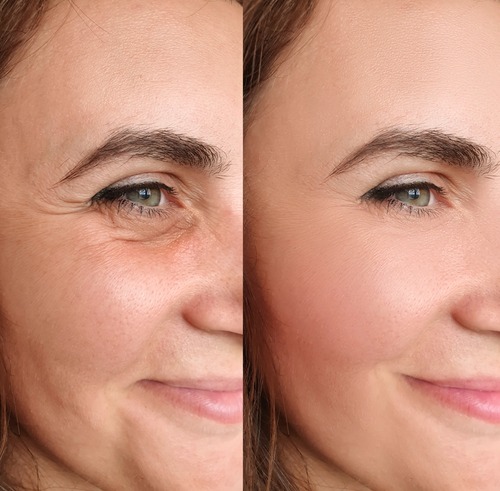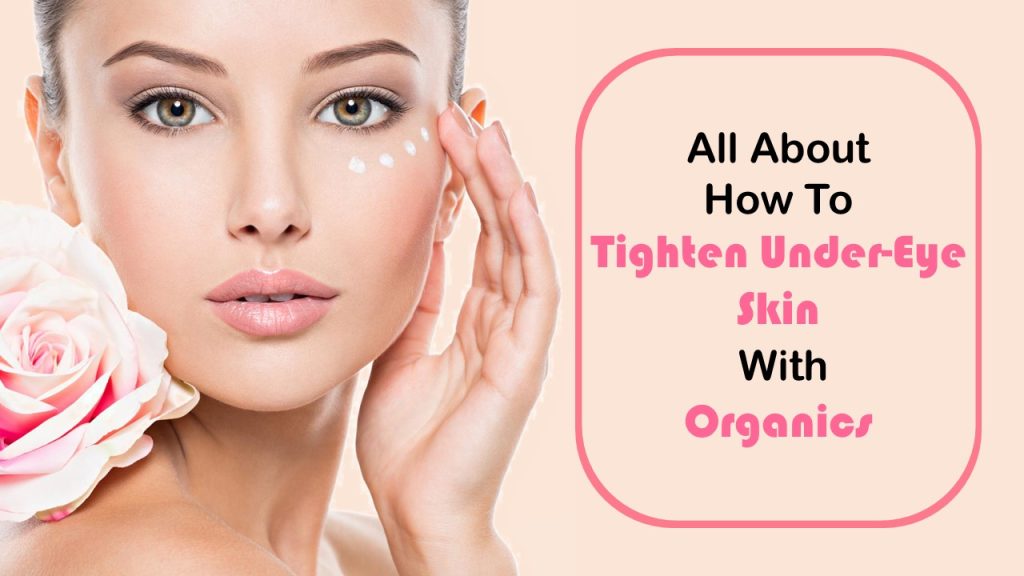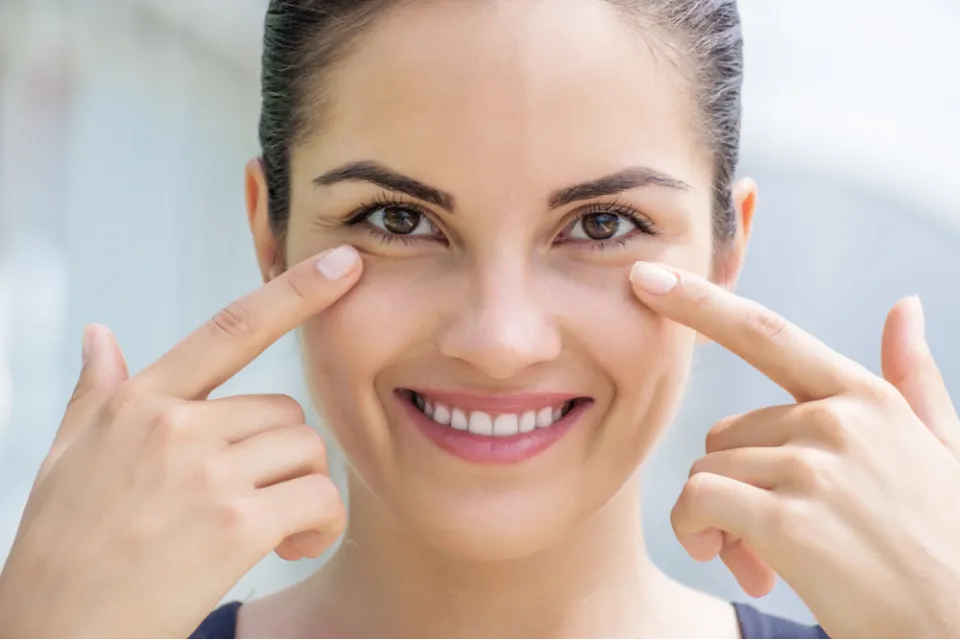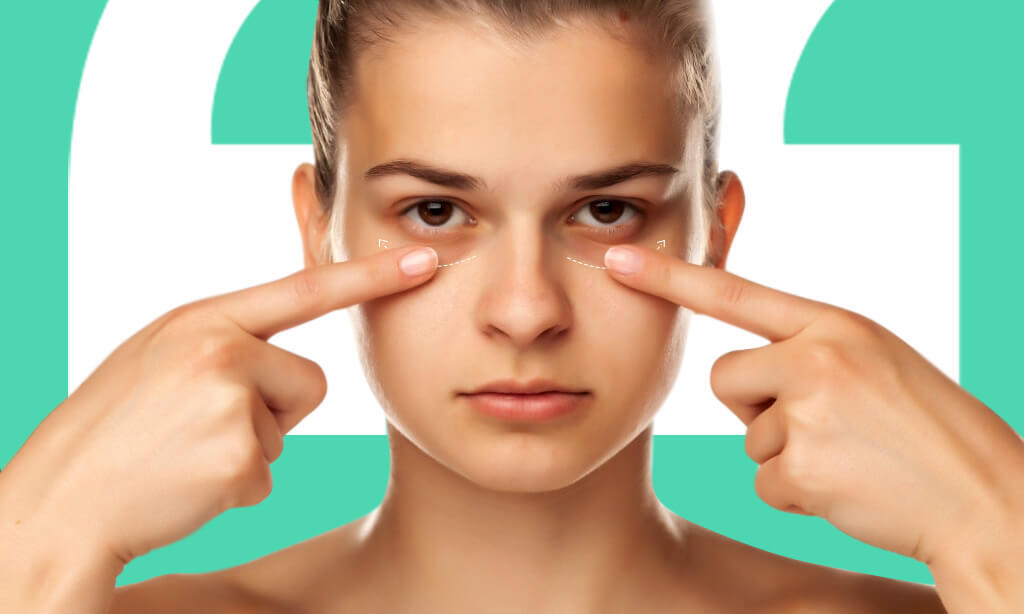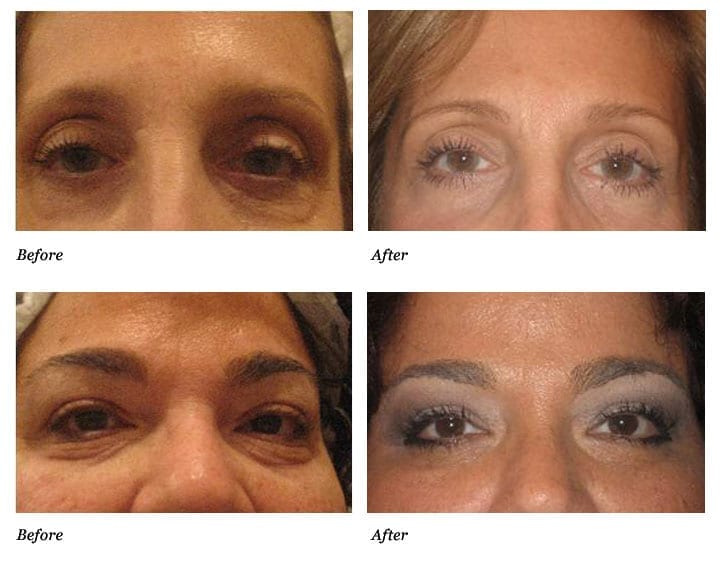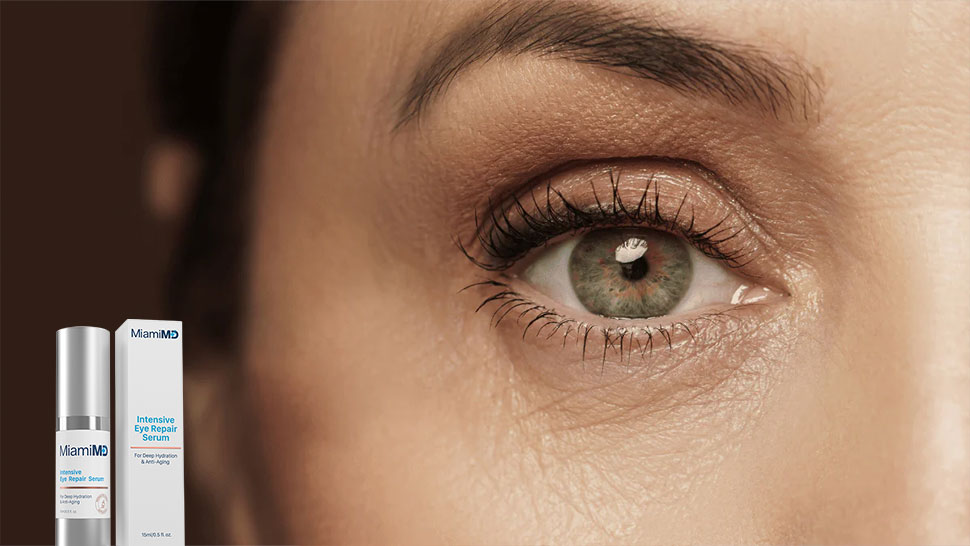How To Tighten Skin Under Eyes

Imagine waking up, the sun gently kissing your face, only to be greeted by the reflection of tired eyes peering back. Those delicate lines and shadows under your eyes can sometimes tell a story you'd rather keep hidden. But what if you could gently rewind time, smoothing and tightening that delicate skin, bringing back a brighter, more refreshed you?
This article delves into effective and gentle methods to address skin laxity under the eyes, exploring a range of options from lifestyle adjustments to advanced cosmetic treatments. Whether you're seeking subtle improvements or a more dramatic transformation, understanding the underlying causes and available solutions is the first step towards achieving brighter, more youthful-looking eyes.
Understanding the Under-Eye Area
The skin under our eyes is remarkably thin and delicate, making it especially vulnerable to the effects of aging and environmental factors. This area lacks the same density of collagen and elastin as other parts of the face, leading to a higher susceptibility to wrinkles and sagging. Sun exposure, genetics, lifestyle choices, and even repetitive facial movements contribute to the loss of elasticity and the appearance of loose skin.
As we age, our bodies naturally produce less collagen, the protein responsible for maintaining skin's firmness and structure. This decline, coupled with the breakdown of elastin, results in the skin losing its ability to bounce back, leading to the formation of fine lines, wrinkles, and sagging. The skin around the eyes is often the first to show these signs of aging.
Lifestyle Adjustments for Tighter Skin
Before considering more invasive options, implementing certain lifestyle changes can significantly improve the appearance of the under-eye area. These adjustments focus on protecting the skin, boosting collagen production, and promoting overall skin health.
Sun Protection: A Daily Essential
Sun exposure is a major culprit in accelerating skin aging. Protecting the delicate under-eye area with sunscreen is crucial. Choose a broad-spectrum sunscreen with an SPF of 30 or higher, specifically formulated for sensitive skin, and apply it daily, even on cloudy days.
Consider wearing sunglasses with UV protection to shield your eyes and the surrounding skin from harmful rays. "Sun protection is the cornerstone of any anti-aging skincare routine," emphasizes Dr. Anya Sharma, a board-certified dermatologist.
Hydration: The Key to Plump Skin
Dehydration can make fine lines and wrinkles appear more pronounced. Drinking plenty of water helps maintain skin's elasticity and plumpness. Aim for at least eight glasses of water a day to keep your skin hydrated from the inside out.
You can also incorporate hydrating skincare products into your routine. Look for ingredients like hyaluronic acid, which attracts and retains moisture in the skin.
Diet & Nutrition: Nourishing Your Skin
A balanced diet rich in antioxidants, vitamins, and minerals can support collagen production and overall skin health. Include plenty of fruits, vegetables, and lean protein in your diet. Foods rich in Vitamin C, such as citrus fruits and berries, are particularly beneficial for collagen synthesis.
Certain foods can also contribute to inflammation, which can exacerbate skin problems. Limiting processed foods, sugary drinks, and excessive alcohol can help improve skin health. "What you eat directly impacts the health and appearance of your skin," states nutritionist Sarah Chen.
Sleep: The Ultimate Skin Rejuvenator
Lack of sleep can lead to dark circles and puffiness under the eyes, making the skin appear more tired and aged. Aim for seven to eight hours of quality sleep each night to allow your skin to repair and regenerate. Elevating your head slightly while sleeping can also help reduce fluid retention and puffiness around the eyes.
Topical Treatments for Under-Eye Skin
A variety of topical treatments can help improve the appearance of loose skin under the eyes. These products typically contain ingredients that stimulate collagen production, improve skin elasticity, and reduce inflammation.
Retinoids: The Gold Standard in Anti-Aging
Retinoids, derived from Vitamin A, are powerful ingredients that stimulate collagen production, accelerate cell turnover, and improve skin texture. They can help reduce the appearance of fine lines, wrinkles, and sagging skin. Start with a low concentration and gradually increase as tolerated to minimize irritation. It's very important to only use this product at night.
"Retinoids are a cornerstone of any anti-aging skincare routine," explains Dr. David Lee, a leading cosmetic dermatologist. "They are clinically proven to improve skin texture and reduce the appearance of wrinkles."
Peptides: Building Blocks for Collagen
Peptides are short chains of amino acids that act as building blocks for collagen and elastin. They can help stimulate collagen production, improve skin firmness, and reduce the appearance of wrinkles. Look for products that contain multiple peptides for optimal results.
Peptides are generally well-tolerated and can be used by people with sensitive skin.
Hyaluronic Acid: The Hydration Hero
Hyaluronic acid is a humectant that attracts and retains moisture in the skin. It can help plump up the skin, reduce the appearance of fine lines and wrinkles, and improve skin elasticity. Look for hyaluronic acid serums or moisturizers to hydrate the under-eye area.
Hyaluronic acid is particularly effective when combined with other anti-aging ingredients like retinoids or peptides.
Vitamin C: The Antioxidant Powerhouse
Vitamin C is a potent antioxidant that protects the skin from free radical damage, which can contribute to aging. It also helps stimulate collagen production and brighten the skin. Look for Vitamin C serums or creams to incorporate into your skincare routine.
"Vitamin C is a fantastic addition to any skincare routine," says Dr. Emily Carter, a skincare expert. "Its antioxidant properties help protect the skin from environmental damage."
Professional Treatments for Skin Tightening
When lifestyle adjustments and topical treatments are not enough, professional treatments can offer more significant results. These treatments range from minimally invasive procedures to surgical options, each with its own benefits and risks.
Radiofrequency (RF) Therapy: Non-Invasive Tightening
Radiofrequency therapy uses energy waves to heat the deeper layers of the skin, stimulating collagen production and tightening existing collagen fibers. This non-invasive treatment can improve skin firmness and reduce the appearance of wrinkles around the eyes. Several sessions are typically required for optimal results. RF therapy is often marketed and known as micro-needling.
The risk is that some people will have adverse reactions to RF therapy if not done correctly, such as increased redness and inflammation.
Laser Resurfacing: Renewing Skin's Surface
Laser resurfacing uses focused laser energy to remove the outer layers of damaged skin, stimulating collagen production and improving skin texture. This treatment can be effective for reducing wrinkles, fine lines, and skin laxity. There are two main types of laser resurfacing: ablative and non-ablative.
Ablative lasers remove the outer layer of skin, while non-ablative lasers heat the underlying tissue to stimulate collagen production. Recovery time varies depending on the type of laser used.
Chemical Peels: Exfoliating for Smoothness
Chemical peels use a chemical solution to exfoliate the outer layers of skin, revealing smoother, brighter skin underneath. They can help improve skin texture, reduce the appearance of fine lines, and stimulate collagen production. Different types of chemical peels are available, ranging in strength from superficial to deep.
Deeper peels require more downtime but can produce more significant results. Chemical peels are more affordable, but are more risky due to potential for burns.
Blepharoplasty: Surgical Solution for Sagging
Blepharoplasty, or eyelid surgery, is a surgical procedure to remove excess skin and fat from the upper and lower eyelids. This procedure can significantly improve the appearance of sagging skin under the eyes and create a more youthful, refreshed look. Blepharoplasty is a more invasive option and requires a longer recovery time.
"Blepharoplasty is a great option for those with severe sagging skin," confirms Dr. James Wilson, a board-certified plastic surgeon. "The results can be long-lasting and transformative."
Choosing the Right Approach
Selecting the best method for tightening skin under the eyes depends on individual factors, such as the severity of skin laxity, skin type, and personal preferences. It's essential to consult with a dermatologist or qualified skincare professional to determine the most appropriate treatment plan. They can assess your skin and recommend the most effective options for your specific needs.
Remember to prioritize patience and consistency, as many treatments require time to show noticeable results. A combination of lifestyle adjustments, topical treatments, and professional procedures may be the most effective way to achieve significant improvements in the appearance of the under-eye area. A journey to healthier, more youthful-looking eyes is achievable with the right approach and dedication.
Ultimately, the goal is not to erase every line or imperfection, but to enhance your natural beauty and feel confident in your own skin. Embrace the aging process gracefully, while taking proactive steps to care for your skin and maintain a healthy, vibrant appearance.
